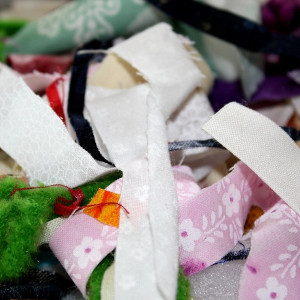The art of quilting is an inspirational experience in itself. The technique of sewing a quilt is fancy to many. For beginners, the process might seem a bit difficult. One who has in-depth knowledge of sewing can try their hands on sewing a quilt as well. It shall provide you with an absolute practical acquaintance altogether.
Below mentioned are a few but significant tips for beginners. Quilting tips for beginners can help them to have a better idea of the sewing technique.
Quilting Tips
 Initiate
Initiate
Gather the courage to move forward to sew a quilt if you have already gained thorough knowledge about the different tricks and techniques of sewing. For a change, please sew other than the usual stuff. Broaden the scope of sewing and start stitching a quilt.
Initially, the process of quilting may seem complicated, but in due course of time, things will become easy. But you need first to initiate the process.
Small Projects
Do not start the first project with something complex. While beginning to learn quilting choose smaller projects. Quilts for kids are a great idea for beginners in this department. But if still, that seems big enough, start quilting for dollhouses.
With smaller quilting projects, one can boost their confidence and then try stitching more significant projects gradually. With haste, there are chances that each technique is not followed thoroughly.
Later, while quilting a standard size, things might seem complicated, and there are chances of more errors.
Easy Designs And Start With Scraps
Beginners in the field of quilting must start the process with straight lines and squares. A sophisticated design will make the whole technique burdensome. There can be a time when he or she will start losing interest. Thus, start with small, manageable steps.
Before you start quilting on actual fabrics of quilts, try quilting on small scrap fabrics. For the initial phase, one can also begin with patchworks on cushion covers or pillow covers. It will help you understand the minute details and use of mosaic on various accessories as per need.
Change Your Needle
Different needle sizes and varieties of length and thickness are locally available. Before you start stitching, make sure you are using the right needle. The needle variation depends on :
- Fabric
- Machine
- Type of project
As per recommendation, you can choose a needle size of size- 80/12 for regular quilts. Some quiltmakers suggest the size of 90/14 as well. For different types of projects, you might need a different needle. Also examine, if the needle is sharp and pointed. It is okay if you are using a fresh new needle. But, if you are using an old needle, you may need to sharpen it before starting to sew. Blunt needles will result in skipped stitches and will hamper the final look of the quilt.
Quality Thread And Correct Fabric Type
For a sturdy and hardy quilt, it is also necessary to use a quality thread for sewing. Choose those threads, which are suitable for quilting. Poor quality of embroidery floss will not only result in weak stitches, but it will also tear off easily.
The essential tip of quilting is choosing the type of material in the project. Choose fabric according to its usage. Too much embellishment on the fabric is not suitable for sleeping quilts. Quilts for babies and kids must be of soft and smooth material for better and soothing comfort.
Similarly, for furnishings like wall hangings, tabletops can be made of heavy and decorative fabric.
Washing And Ironing
Some people like to pre-wash the fabric before sewing while others do not. Once pre-wash is done on the material, you can measure the size and cut accordingly after shrinking.
But note that no washing must be done after the cloth has already been cut. It will mess up all the pre-measured cutting. Some sewing experts consider washing after finishing the sewing as well.
Once you complete stitching, trim all the extra edges or the hanging threads. You can also prefer to iron them to give a wrinkle-free look to the final product. A clean, hygienic, and pressed product will surely impress the clients.
Include The Edges
Most of the quilting fabrics have a zigzag pattern on the sides. While measuring the cloth for the required size, include these edges as well. These patterned edges are the results of using a pinking shear while slicing the fabric.
Irrespective of the project, you are sewing; consider stitching the edges as well. Regular stitching will give a finished look and will prevent the edges from fraying.
 Quilting Ruler For Measuring
Quilting Ruler For Measuring
The measurement of every piece of quilt, i.e., the front, middle, and back fabric, should all be of equal size. Measure the angles correctly before cutting the fabric. Mismatch in any one of them will ruin the whole project.
For perfect measurements on the fabric, use a quilting ruler. Varieties of quilting rulers are available for pattern cutting of the material.
Regular Sewing Machine Maintenance
An essential tip for any sewing project is the regular maintenance of the sewing machine. Annual servicing will increase its longevity.
Along with this, also keep all the supplies organized for easy access. Keep the workplace neat and tidy so that the fabrics do not get stained.
Quilting Tips For Beginners: Final Thoughts
Now, get started with your first project of quilting. Remember to follow the above checklist as quilting tips for beginners for better results. The very first attempt may have some mistakes, and you might also ruin it. But do not get either obsessed or depressed on the failure. Every mistake will teach one or the other lesson. Concentrate on the patterns of stitches, cuts, and finishing. The product will be by far excellent when you excel in learning a new technique. Practice as much as possible so that there is a reduction in the errors. One can always learn the sewing technique from a professional or else take up the one available online modules. Good luck with your first quilting project. A beginner in quilting will gradually become a master in the craft.


